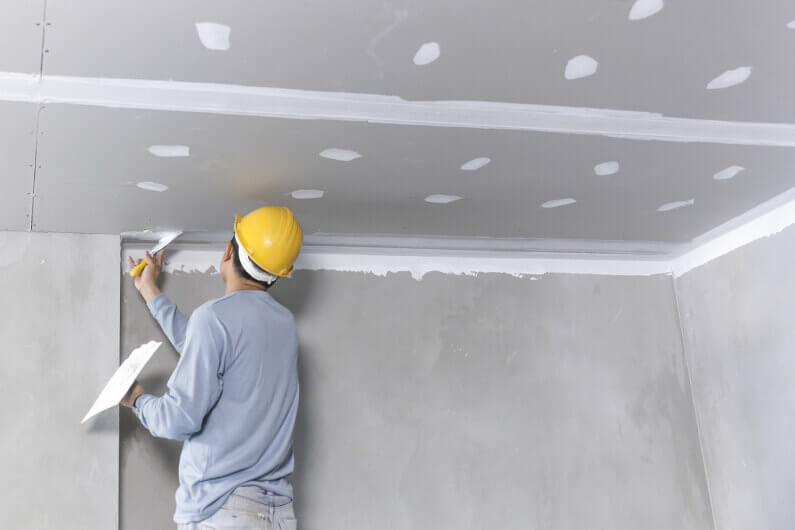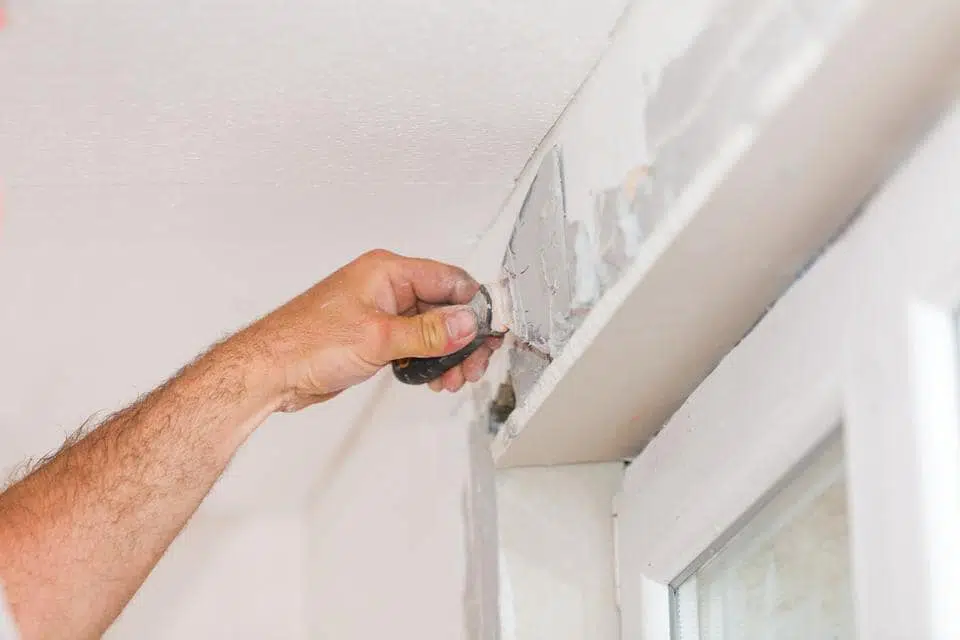Effective Drywall Repair Techniques to Restore Your Walls
Effective Drywall Repair Techniques to Restore Your Walls
Blog Article
Drywall Installment Made Easy: Tips for Perfect Outcomes
Drywall installment is frequently regarded as a complicated job, yet with the appropriate method and understanding, it can end up being a convenient endeavor. Understanding techniques for reducing, hanging, and ending up drywall can substantially impact the result.
Picking the Right Materials
Choosing the appropriate materials for drywall installment is essential to accomplishing a durable and visually pleasing coating. drywall repair. The key component, drywall sheets, normally come in various thicknesses, with 1/2-inch sheets being typical for interior walls. For areas needing added moisture resistance, such as cooking areas or bathrooms, consider using eco-friendly board or concrete board, which are particularly made to withstand humidity

Additionally, selecting the right fasteners-- either nails or screws-- is essential for safeguarding the drywall to the framework. Drywall screws are usually preferred for their holding power and minimized danger of popping. Consider the finishing touches such as primer and paint, which not just improve the appearance yet additionally secure the drywall from moisture and wear.
Preparing the Installation Location
Prior to beginning the drywall installment process, it is essential to prepare the setup location completely. A clean office minimizes the danger of damage to existing products and permits for efficient motion during installation.
Following, evaluate the walls and ceiling for any kind of imperfections, such as fractures, openings, or mold. Address these issues ahead of time; patch any type of damages and allow adequate time for repair services to dry. Furthermore, guarantee that electrical outlets, buttons, and pipes are correctly placed and accounted for, as this will influence drywall placement.
Think about the environmental conditions. A steady temperature and humidity level are important for ideal bond and performance of the drywall materials. If required, use a dehumidifier or heater to create suitable conditions.
Cutting and Hanging Drywall
The secret to effective drywall installation exists in the exact cutting and dangling of the panels. Utilize a straight edge and an energy knife to score the drywall along your dimensions, then break it along the racked up line for a clean break.

Always function from the top down and left to right, making sure that you maintain a staggered pattern to improve stability. Properly hanging the drywall sets the structure for a smooth coating, ultimately leading to exceptional lead to your drywall job.
Insulation and Mudding Techniques
While appropriate cutting and dangling of drywall sets the phase, the following important action involves grasping taping and mudding methods to make certain a seamless finish. Insulation is important for strengthening joints and stopping splits; it involves embedding tape right into the used joint substance (mud) Beginning with a quality fiberglass or paper tape, applying the tape over the joint and pressing it right into the damp mud making use of a taping blade, ensuring no air bubbles remain.
When the tape remains in location, use a slim layer of joint substance over the tape, feathering the sides to develop a smooth transition to the drywall surface. Allow this layer to dry completely before sanding it lightly to remove imperfections. Repeat this process, applying additional coats of mud as required-- usually 2 to 3 layers-- while slowly broadening the application area with each layer to accomplish a seamless look.
After the final coat dries out, sand the surface area with a fine-grit sandpaper till smooth. drywall installation. Remember to wear a mask More hints during fining sand to stay clear of breathing in dust bits. Mastering these taping and mudding techniques is critical for achieving a professional-quality coating in your drywall installment
Ending Up Touches for Perfection
Achieving a flawless drywall installment goes past mudding and taping; it culminates in the finishing touches that boost the general appearance. These final actions are vital in making sure a professional-grade surface that enhances the aesthetics of your room.
Begin by fining sand the dried joint substance to create a smooth surface area. drywall installation. After fining sand, wipe down the wall surfaces with a damp towel to remove any type of dust bits, making certain a clean Full Article surface area for painting.
Next, use a primer particularly designed for drywall. This step is crucial, as it assists secure the joint compound and supplies a consistent base for the topcoat. When the guide dries, examine for any kind of imperfections, and retouch as required.
Conclusion
In final thought, effective drywall setup pivots on the mindful option of products, thorough preparation of the installation area, and precise execution of cutting and hanging techniques. Mastery of taping and mudding processes is essential for achieving a smooth finish.
Drywall installation is often perceived as a challenging task, yet with the best approach and knowledge, it can become a convenient undertaking.Picking the proper materials for drywall setup is essential to achieving a durable and cosmetically pleasing coating.Prior to beginning the drywall installation procedure, it is necessary to prepare the setup area thoroughly. Understanding these taping and mudding methods is vital for achieving a professional-quality coating in your drywall installment.
In final thought, successful go to this web-site drywall installment hinges on the careful option of materials, comprehensive prep work of the setup area, and specific implementation of cutting and hanging strategies.
Report this page